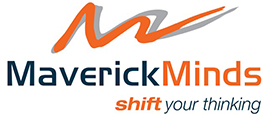Artwork: Cathryn Lloyd
Now that we’re into the swing of the year, it’s opportune to reflect on how we’ve managed January. What was your intention as you headed into 2025?
One of my intentions is to maintain a healthy balance between my aspirations and the need for rest.
During the holiday season, I embraced a space where days blurred—an opportunity to catch up with loved ones and ease back into the year. I wrote about it here.
This time allowed me to “rest” with the idea of rest and delve into Dr. Saundra Dalton-Smith’s concept of seven types of rest, which go beyond just sleep and address different facets of energy depletion.
From the conversations I’ve already had, it seems I’m not the only one who wants to create a kinder and more self-compassionate way of working. If we want to do that for ourselves, then we’re more likely to support others in the process.
In her book Sacred Rest: Recover Your Life, Renew Your Energy, Restore Your Sanity, Saundra identifies seven types of rest and recovery, highlighting that sleep may not always be the solution when we feel fatigued. Her philosophy underscores how our energy may deplete and suggests the following ways to recharge.
Here’s a snapshot:
- Physical rest: Sleep, naps, and stillness are necessary. Alternatively, you may need gentle stretching or easy walking to circulate oxygen in your body. A quiet walk in nature can do wonders to rest your being.
- Mental rest: Involves quietening our busy minds, practising moments of mindfulness, journaling or stepping away from the digital world and unhelpful conversations.
- Spiritual rest: This is not necessarily faith-based, although it might be. It’s more about having a sense of purpose, meaning, and belonging. Experiencing nature, reading poetry, and realising our connection to a larger whole can be a spiritual refuge.
- Creative rest: What inspires you? Do you allow space to daydream and wonder? Can you appreciate the beauty around you? Do you think of yourself as being creative and acknowledge your creative energy? How can you replenish your creative cup?
- Emotional rest: Controlling our emotions takes a lot of self-awareness and, at times, energy. Where is a safe place to be vulnerable and allow yourself to be seen and heard? Who is that person you trust with whom you can share how you feel? What professional help is available if need be? Journaling can also provide comfort and a private outlet for your experiences.
- Social rest: Consider the people in your lives and relationships, take a break from energy-draining interactions, and prioritise meaningful connections. Who are the people you like being with, and where is there reciprocity? The same people in our lives can provide us with energy; at other times, they may require it.
- Sensory rest: How is your environment? Is there a lot of extraneous noise that you have to filter? How can we unplug from noise, bright lights, and digital overload? Everyone’s bandwidth is different – where is your point of overload? One little tip is to turn off notifications on digital devices, and if you wear a smartwatch, maybe give it – and you – a rest from time to time.
I’m acutely aware that sensory overload is one of my energy-depleting areas, and I need to pay attention and adopt strategies to manage that sensory overload. One of those strategies is a pair of new computer glasses with blue lenses to help reduce the bright light from the computer. It’s early days, although I feel like it’s making a difference already.
Finding the type of rest you need will satisfy and rejuvenate you. Your rest may differ from another person, even the people closest to you. What constitutes rest and rejuvenation for one may be exhausting for another.
As Saundra says, treat the options like a buffet. You don’t have to eat everything, but you might like to try something new. Wise words, who knows, you may find a fresh treat or two.
When I shared my theme for the year as “timing,” inviting others to consider their guiding focus for 2025, I was delighted by the diverse and thoughtful themes people contributed. One recurring theme was “collaboration,” as many expressed a desire to forge deeper connections and spark valuable insights through cooperative efforts—both in creative forums and within their professional landscapes.
Themes like action, balance, and positivity resonate and can guide our paths. They provide clarity, helping us navigate life with engagement and presence. What about you? What is your theme for this year? Sharing your aspirations with others and within teams can forge a shared vision and encourage growth.

